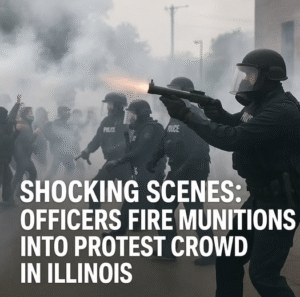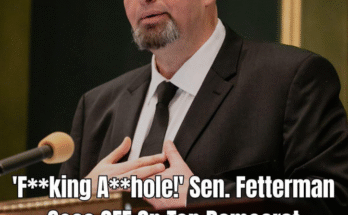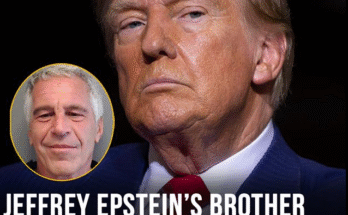Tensions Boil Over: Officers Fire Munitions Into Protest Crowd in Illinois
In a tense and chaotic scene that has captured national attention, law enforcement officers in Illinois recently fired munitions into a crowd of protesters, escalating an already volatile situation and raising urgent questions about the balance between public safety and civil liberties. The incident occurred amid growing social unrest, fueled by a combination of political discord, local grievances, and longstanding frustration over systemic issues, including policing practices and community relations.
The protest began peacefully, with participants gathering to voice concerns over local policy decisions, perceived injustices, and broader societal issues. Families, students, and community activists were among those present, carrying signs and chanting slogans that highlighted their calls for accountability and reform. Initially, the demonstration followed a familiar pattern seen in many civic protests: orderly marches, speeches from community leaders, and attempts to engage constructively with local authorities.
However, tensions began to escalate as the crowd grew larger and emotions ran high. Reports indicate that some demonstrators engaged in acts of civil disobedience, including blocking roadways, climbing onto public structures, and refusing to disperse when directed by police. While most participants maintained peaceful conduct, the actions of a few individuals created a perception of disorder, prompting law enforcement to respond with heightened measures.
The response from the police included the deployment of crowd-control munitions, such as tear gas, rubber bullets, and smoke canisters. Eyewitness accounts describe chaotic scenes, with protesters fleeing in multiple directions to avoid being hit by projectiles. Videos circulated on social media show thick clouds of smoke filling streets, individuals wiping tears and irritants from their eyes, and the sound of repeated munitions detonations punctuating the night. Many participants described the experience as frightening, with some reporting minor injuries caused by rubber bullets or debris resulting from the dispersal tactics.
Authorities justified their actions by citing concerns about public safety and property damage. Police officials argued that the use of munitions was a necessary measure to prevent escalation and to protect both the demonstrators and the surrounding community. Statements released by the department emphasized that officers were responding to a small subset of the crowd engaging in unlawful activity, and that the deployment of munitions was intended as a controlled and measured response.
Despite these justifications, the incident has drawn widespread criticism from civil rights organizations, local leaders, and the broader public. Critics argue that the use of force against largely peaceful protesters represents a disproportionate response that undermines democratic principles and the right to free assembly. They contend that deploying munitions into a dense crowd increases the risk of unintended injuries, inflames tensions, and erodes trust between the community and law enforcement. Several advocacy groups have called for independent investigations into the police response, demanding transparency, accountability, and clear protocols for the use of force in protest situations.
The incident also highlights broader challenges facing law enforcement in managing public demonstrations. Across the United States, police departments are often tasked with balancing the protection of public safety with the constitutional rights of citizens to protest and express dissent. This delicate balance can become increasingly difficult to maintain during large-scale or emotionally charged demonstrations, particularly when underlying social, economic, or political grievances are at play. In Illinois, as in many other regions, tensions between community members and police have been heightened by high-profile national events, local controversies, and historical patterns of mistrust.
Community leaders in the affected area have urged calm and dialogue in the aftermath of the confrontation. Religious leaders, elected officials, and neighborhood organizers have emphasized the importance of communication and the need for both sides to engage in constructive discussions. They argue that sustainable solutions to public safety and social grievances cannot be achieved through force alone, and that addressing the root causes of unrest requires collaboration, empathy, and meaningful policy reform.
Public reactions to the event have been divided, reflecting the broader polarization in the national discourse surrounding protest movements. Some members of the community have expressed support for law enforcement, acknowledging the challenges officers face in rapidly evolving situations and the need to maintain order. Others have criticized what they see as excessive use of force and a lack of accountability, pointing to the potential long-term damage to community relations and the erosion of trust in institutions meant to serve and protect citizens.
The aftermath of the confrontation has prompted local authorities to review policies and procedures related to crowd management. Police departments have reiterated the importance of clear communication, de-escalation techniques, and adherence to best practices in managing protests. At the same time, civil rights organizations are calling for external oversight, including the presence of independent monitors during future demonstrations and a thorough review of the incident to ensure that guidelines for the use of force were followed appropriately.
Legal implications are also emerging, as potential lawsuits may be filed by protesters alleging excessive force, injury, or violation of constitutional rights. These legal challenges could have significant consequences for the department involved, both in terms of financial liability and public perception. Courts will likely examine whether law enforcement actions were proportionate, necessary, and consistent with established protocols, further underscoring the complexities inherent in managing civil unrest.
Media coverage of the event has been extensive, with local, national, and international outlets documenting the escalation and the resulting injuries, arrests, and community response. Social media has played a particularly prominent role, as videos and firsthand accounts circulate rapidly, shaping public perception and influencing the discourse around police accountability, civil rights, and the appropriate response to protest activity. The visibility of these events has contributed to a broader conversation about the role of policing in a democratic society and the importance of ensuring that the rights of citizens are respected even in times of tension.
Looking ahead, the incident serves as a reminder of the fragile balance between public order and individual freedoms. Effective solutions require not only tactical proficiency on the part of law enforcement but also a deep understanding of community dynamics, empathy for citizen concerns, and a commitment to transparency. Policymakers, community leaders, and law enforcement officials must work collaboratively to develop strategies that prevent escalation, protect rights, and build trust—essential components for maintaining a stable and just society.
In conclusion, the Illinois protest incident, in which officers fired munitions into a crowd, underscores the high stakes of managing civil unrest and the challenges of balancing security with constitutional freedoms. While authorities argue that their actions were necessary to prevent disorder, critics highlight the potential harm to public trust and the need for accountability. The event has sparked a broader conversation about policing practices, the appropriate use of force, and the importance of engaging with communities in ways that promote dialogue and understanding rather than confrontation. As investigations continue and the community grapples with the aftermath, one thing is clear: the need for thoughtful, measured, and principled approaches to protest management has never been more urgent.


